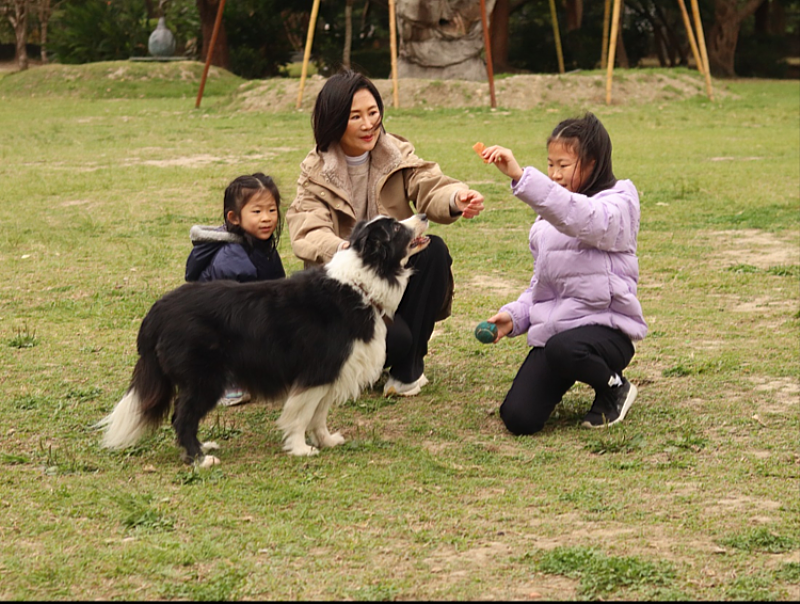- Jehovah’s Witnesses Launch Invitation Campaign All Residents of Taiwan Invited to Two Special Events in March
- A New Highlight at the 2024 Taipei International Book Exhibition Jehovah’s Witnesses Encourage the Net Generation to Look to an Ancient Book for Practical Wisdom
- Providing People With Comfort and Hope in the “Language Of One’s Heart” As International Mother Language Day approaches, Jehovah’s Witnesses offer content in more than 1,000 languages
- JW.ORG® Offers Five Tips to Generate Academic Motivation
- “Coping With Disabilities” Section on JW.ORG® Helps Disabled Persons Face the Future With Optimism
INNOVATIONS INSPIRED BY NATURE One of the most visited Bible education websites in the world offers captivating details about our planet’s plants and animals.
(中央社訊息服務20240304 10:51:53)Brown Sugar, the Lin family’s dog, can sniff out a treat hidden anywhere in the house. Little does he know that his owners are learning just how he does this.

Mrs. Lin of Kaohsiung, and her two kids are reading an article on how a dog’s sense of smell is thousands of times more refined than a human’s sniffing skills. They also are surprised to find out how a dog’s nose can possibly help scientists detect so much more than scent!
Mrs. Lin’s family has experience training guide dogs. When it comes to a dog’s sense of smell, she emphasizes that after being professionally trained, a dog’s sense of smell can be a useful tool. Guide dogs have never eaten human foods, so they will not be distracted by food smells and will concentrate on guiding the visually impaired. Drug detection dogs and search and rescue dogs can also perform life-saving and anti-drug work after scent training.
“This is so cool!” said her school-aged daughter. “I didn’t know Brown Sugar’s nose could do all that.”
The article is part of a captivating series titled “Was It Designed?” The free content can be accessed through one of the most visited Bible education websites in the world, jw.org.
The articles, with audio recordings and videos, provide easy-to-understand descriptions of some of the most awe-inspiring elements of earth’s creatures and vegetation. It also makes connections to the modern world with surprising answers to questions such as:
• What does a wandering albatross have to do with aerial vehicles?
• How can a seahorse’s tail help perform successful surgeries?
• And how can a brilliant blue Pollia berry prevent production of counterfeit money?
“Taiwanese people are becoming increasingly aware of the conservation of native flora and fauna. Recent surveys have pointed out that there are 110 species of native plants in Taiwan that are not protected by nature reserves or national parks. This series will not only appeal to anyone interested in nature and animals but also to anyone who is concerned about the preservation of our planet’s biodiversity,” said Johnson Jan, local spokesperson for Jehovah’s Witnesses.
Recognizing many people’s interest and concern for nature, the United Nations has even established an annual World Wildlife Day. On March 3, 2024, many will celebrate the earth’s variety of wild fauna and flora and raise awareness for their conservation.
Each day, more than 2,100,000 visitors use jw.org, the official website of Jehovah’s Witnesses, to access free information that addresses today’s concerns. Care for the environment is among the many topics they can investigate on the site.
The “Was it Designed?” series also explains how nature can even inspire innovations in engineering, robotics and product design:
• The wandering albatross’s flight capabilities may help engineers design more fuel-efficient aerial vehicles, perhaps even with engineless propulsion.
• A seahorse’s tail design can be applied to search and rescue robots and surgical equipment that need to be capable of bending and twisting in tight places.
• Some scientists say that the Pollia berry’s iridescent pigment-free color could possibly help develop fade-resistant dyes and counterfeit-resistant paper.
As for Brown Sugar’s nose? The Lin family also learn from the article how scientists are using a dog’s superior smelling capabilities as a model to develop electronic “noses” to detect explosives, contraband and disease, including cancer.
“This series is amazing!” said Mrs. Lin. “It definitely has given our family more appreciation for earth’s plants and animals, but most of all, it also gives us hope for our planet’s future.”
To access the free “Was It Designed?” online series, visit jw.org > Bible Teachings > Science & the Bible > Was It Designed?
––––
Johnson Jan
Director of Communications
Email:hzhan@jw.org
Phone:0913 055 307





